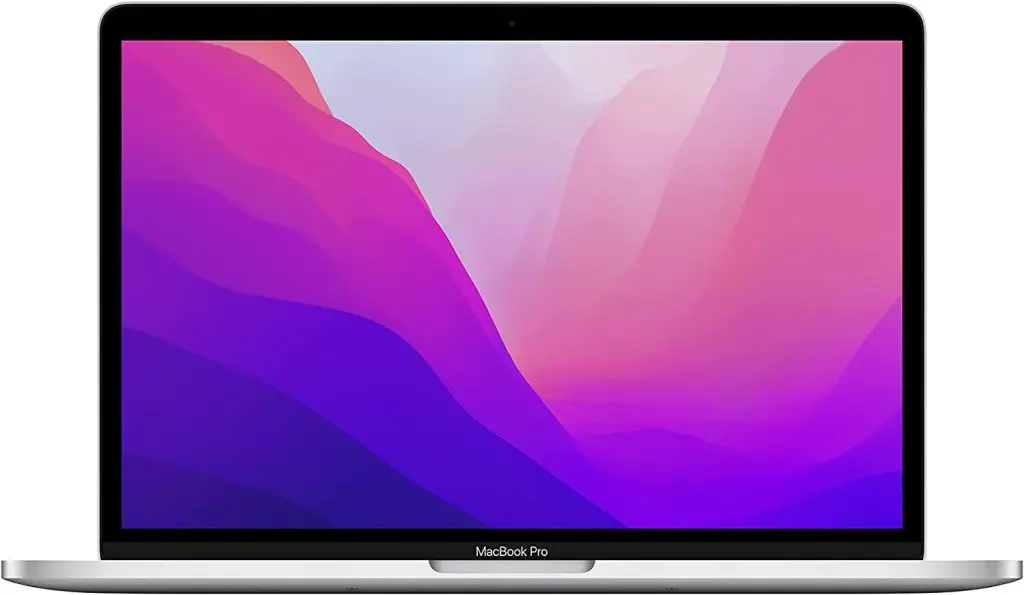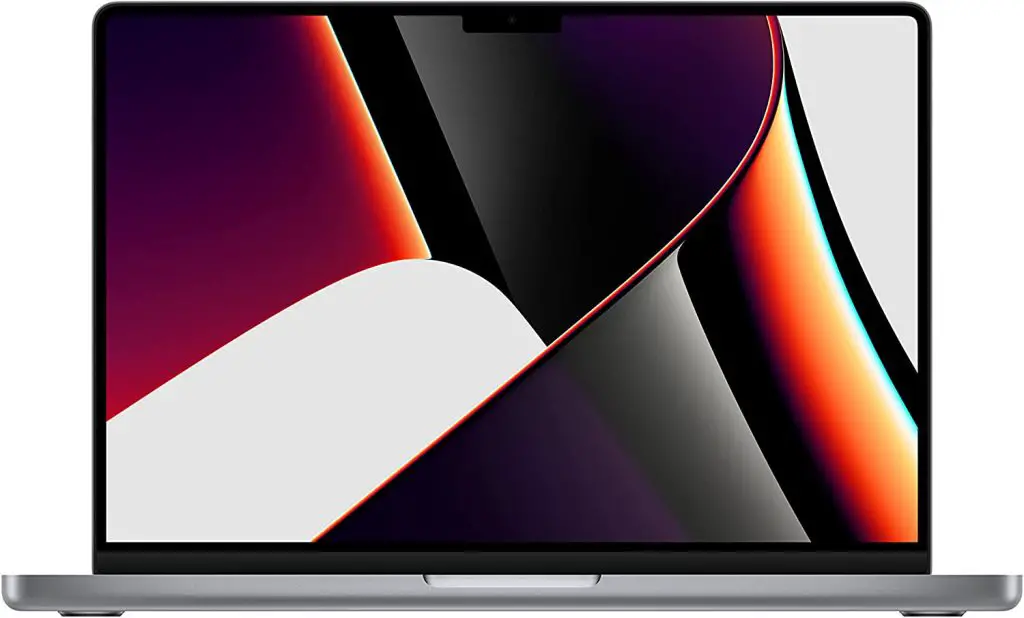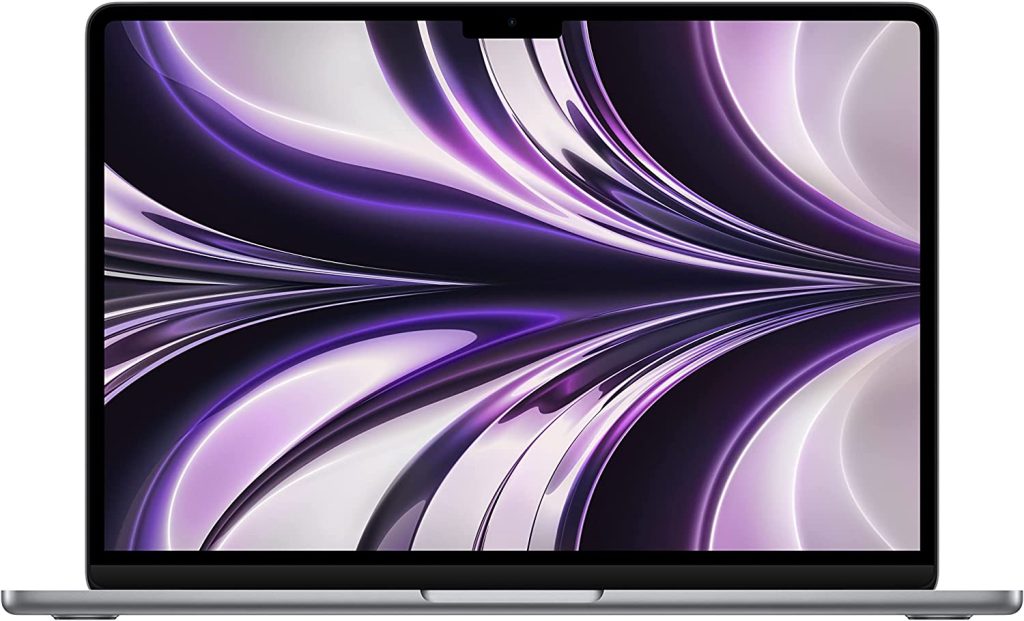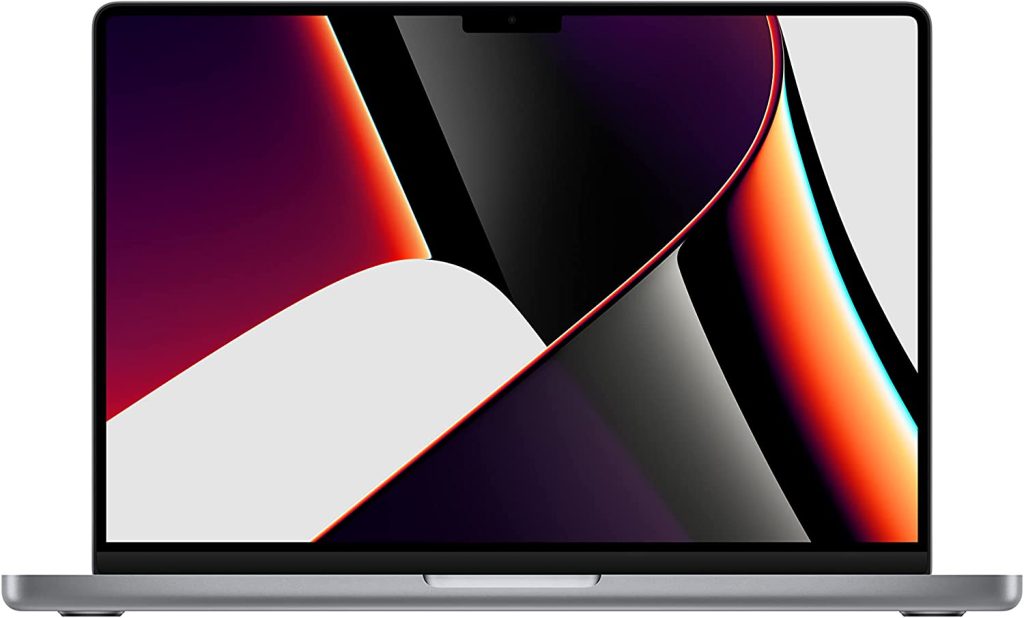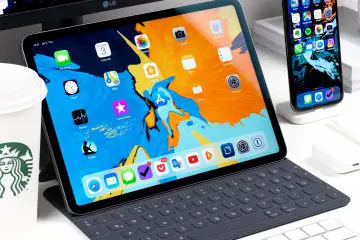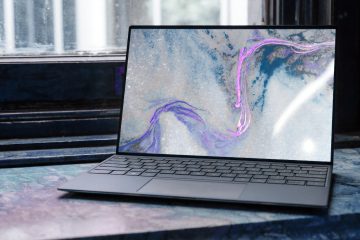MacBooks have long been a popular choice for music producers due to their powerful hardware and sleek design. Whether you’re a professional musician or a beginner looking to get started in music production, there are a few key factors to consider when selecting the best MacBook for your needs.
In this article, we are taking a closer look at the best and most popular MacBooks for music production. Further on, we’ll also go through a buyer’s guide with the most important things you need to take into consideration when making your pick.
Best MacBook for music production
2022 Apple MacBook Pro Laptop with M2 chip: 13-inch Retina Display
As an owner of the 2022 Apple MacBook Pro with the M2 chip and 13-inch Retina Display, I am extremely satisfied with my purchase. The M2 chip provides lightning-fast performance, making it a great choice for tasks such as music production and video editing. The 13-inch Retina Display is also a standout feature, providing crystal-clear images and vibrant colors.
One of the things I love most about this MacBook Pro is its slim and lightweight design, which makes it easy to take on the go. The battery life is also impressive, lasting for several hours of use on a single charge.
The MacBook Pro comes with macOS Big Sur, which is user-friendly and intuitive to use. It also has a wide range of built-in apps and tools for tasks such as photo and video editing, as well as access to the Mac App Store for downloading additional software.
In terms of connectivity, the MacBook Pro has a variety of ports, including Thunderbolt 3 ports for connecting high-speed devices such as external hard drives. It also has a Touch Bar, which allows for convenient access to frequently used tools and functions.
Overall, the 2022 Apple MacBook Pro with the M2 chip and 13-inch Retina Display is a top-of-the-line laptop that delivers fast performance, a beautiful display, and a slim, portable design. It’s a great choice for professionals and creative individuals alike.
Specifications
Here are the key specifications for this model:
- Processor: The MacBook Pro is equipped with a powerful M2 chip, which provides lightning-fast performance for tasks such as music production, video editing, and gaming.
- Memory: The MacBook Pro comes with 8GB of memory, which is sufficient for most tasks. It’s also possible to upgrade to 16GB or 32GB of memory for heavier multitasking or resource-intensive tasks.
- Storage: The MacBook Pro comes with 256GB of storage, which is sufficient for most users. It’s also possible to upgrade to 512GB, 1TB, or 2TB of storage for those who need more space for files and software.
- Display: The MacBook Pro has a 13-inch Retina Display, which provides crystal-clear images and vibrant colors. The display has a resolution of 2560×1600, making it great for tasks such as photo and video editing.
- Operating system: The MacBook Pro comes with macOS Big Sur, which is user-friendly and intuitive to use. It also has a wide range of built-in apps and tools for tasks such as photo and video editing, as well as access to the Mac App Store for downloading additional software.
- Connectivity: The MacBook Pro has a variety of ports, including Thunderbolt 3 ports for connecting high-speed devices such as external hard drives. It also has a Touch Bar, which allows for convenient access to frequently used tools and functions.
Overall, the 2022 Apple MacBook Pro with the M2 chip and 13-inch Retina Display is a powerful and versatile laptop that is well-suited for professionals and creative individuals alike.
2021 Apple MacBook Pro 14-inch, Apple M1 Pro chip with 8‑core CPU and 14‑core GPU, 16GB RAM, 512GB SSD
The M1 chip provides lightning-fast performance, making it a great choice for tasks such as music production and video editing. The 14-inch display is also a standout feature, providing crystal-clear images and vibrant colors.
One of the things I love most about this MacBook Pro is its slim and lightweight design, which makes it easy to take on the go. The battery life is also impressive, lasting for several hours of use on a single charge.
The MacBook Pro comes with macOS Big Sur, which is user-friendly and intuitive to use. It also has a wide range of built-in apps and tools for tasks such as photo and video editing, as well as access to the Mac App Store for downloading additional software.
In terms of connectivity, the MacBook Pro has a variety of ports, including Thunderbolt 3 ports for connecting high-speed devices such as external hard drives. It also has a Touch Bar, which allows for convenient access to frequently used tools and functions.
Overall, the 2021 Apple MacBook Pro with the M1 chip is a top-of-the-line laptop that delivers fast performance, a beautiful display, and a slim, portable design. It’s a great choice for professionals and creative individuals alike.
Specifications
- Processor: The MacBook Pro is equipped with a powerful M1 chip, which has an 8-core CPU and a 14-core GPU. This provides lightning-fast performance for tasks such as music production, video editing, and gaming.
- Memory: The MacBook Pro comes with 16GB of memory, which is sufficient for most tasks. It’s also possible to upgrade to 32GB of memory for heavier multitasking or resource-intensive tasks.
- Storage: The MacBook Pro comes with 512GB of storage, which is sufficient for most users. It’s also possible to upgrade to 1TB or 2TB of storage for those who need more space for files and software.
- Display: The MacBook Pro has a 14-inch Retina Display, which provides crystal-clear images and vibrant colors. The display has a resolution of 2560×1600, making it great for tasks such as photo and video editing.
- Operating system: The MacBook Pro comes with macOS Big Sur, which is user-friendly and intuitive to use. It also has a wide range of built-in apps and tools for tasks such as photo and video editing, as well as access to the Mac App Store for downloading additional software.
2022 Apple MacBook Air Laptop with M2 chip: 13.6-inch Liquid Retina Display, 8GB RAM, 256GB SSD Storage
The 2022 Apple MacBook Air with the M2 chip is a powerful and portable laptop that is perfect for everyday use. It features a 13.6-inch Liquid Retina Display, which provides crystal-clear images and vibrant colors, making it great for tasks such as web browsing, streaming movies, and working with documents. And, most importantly, music production.
The MacBook Air is equipped with the M2 chip, which provides lightning-fast performance for tasks such as web browsing, email, and basic photo and video editing. It also comes with 8GB of memory, which is sufficient for most tasks, and 256GB of SSD storage, which is enough space for most users.
One of the standout features of the MacBook Air is its slim and lightweight design, which makes it easy to take on the go. It also has a long battery life, lasting for several hours of use on a single charge.
The MacBook Air comes with macOS Big Sur, which is user-friendly and intuitive to use. It also has a wide range of built-in apps and tools for tasks such as photo and video editing, as well as access to the Mac App Store for downloading additional software.
In terms of connectivity, the MacBook Air has a variety of ports, including Thunderbolt 3 ports for connecting high-speed devices such as external hard drives. It also has a Touch ID sensor for secure login and online purchases.
Overall, the 2022 Apple MacBook Air with the M2 chip is a powerful and portable laptop that is perfect for everyday use. It’s a great choice for users who need a reliable machine for tasks such as web browsing, email, and basic photo and video editing.
Specifications
The 2022 Apple MacBook Air with the M2 chip is a powerful and portable laptop that is perfect for music production. Here are the key specifications for this model:
- Processor: The MacBook Air is equipped with the M2 chip, which provides lightning-fast performance for tasks such as web browsing, email, and basic photo and video editing.
- Memory: The MacBook Air comes with 8GB of memory, which is sufficient for most tasks. It’s also possible to upgrade to 16GB or 32GB of memory for heavier multitasking or resource-intensive tasks.
- Storage: The MacBook Air comes with 256GB of SSD storage, which is sufficient for most users. It’s also possible to upgrade to 512GB, 1TB, or 2TB of storage for those who need more space for files and software.
- Display: The MacBook Air has a 13.6-inch Liquid Retina Display, which provides crystal-clear images and vibrant colors. The display has a resolution of 2560×1600, making it great for tasks such as web browsing, streaming movies, and working with documents.
- Operating system: The MacBook Air comes with macOS Big Sur, which is user-friendly and intuitive to use. It also has a wide range of built-in apps and tools for tasks such as photo and video editing, as well as access to the Mac App Store for downloading additional software.
- Connectivity: The MacBook Air has a variety of ports, including Thunderbolt 3 ports for connecting high-speed devices such as external hard drives. It also has a Touch ID sensor for secure login and online purchases.
Apple 2021 MacBook Pro 16-inch, M1 Pro chip with 10‑core CPU and 16‑core GPU, 16GB RAM
The 2021 Apple MacBook Pro with the M1 chip is a powerful and versatile laptop that is perfect for professionals and creative individuals. It features a 16-inch Retina Display, which provides crystal-clear images and vibrant colors, making it great for tasks such as photo and video editing, music production, and gaming.
The MacBook Pro is equipped with the M1 chip, which has a 10-core CPU and a 16-core GPU. This provides lightning-fast performance for tasks such as photo and video editing, music production, and gaming. It also comes with 16GB of memory, which is sufficient for most tasks.
One of the standout features of the MacBook Pro is its slim and lightweight design, which makes it easy to take on the go. It also has a long battery life, lasting for several hours of use on a single charge.
The MacBook Pro comes with macOS Big Sur, which is user-friendly and intuitive to use. It also has a wide range of built-in apps and tools for tasks such as photo and video editing, as well as access to the Mac App Store for downloading additional software.
In terms of connectivity, the MacBook Pro has a variety of ports, including Thunderbolt 3 ports for connecting high-speed devices such as external hard drives. It also has a Touch Bar, which allows for convenient access to frequently used tools and functions.
Overall, the 2021 Apple MacBook Pro with the M1 chip is a powerful and versatile laptop that is perfect for professionals and creative individuals. It’s a great choice for users who need a reliable machine for tasks such as photo and video editing, music production, and gaming.
Specifications
The 2021 Apple MacBook Pro with the M1 chip is a powerful and versatile laptop that is perfect for professionals and creative individuals. Here are the key specifications for this model:
- Processor: The MacBook Pro is equipped with the M1 chip, which has a 10-core CPU and a 16-core GPU. This provides lightning-fast performance for tasks such as photo and video editing, music production, and gaming.
- RAM memory: The MacBook Pro comes with 16GB of memory, which is sufficient for most tasks. It’s also possible to upgrade to 32GB of memory for heavier multitasking or resource-intensive tasks.
- Storage: The MacBook Pro comes with a variety of storage options, including 256GB, 512GB, 1TB, or 2TB of SSD storage. Choose the option that meets your needs and budget.
- Display: The MacBook Pro has a 16-inch Retina Display, which provides crystal-clear images and vibrant colors. The display has a resolution of 3072×1920, making it great for tasks such as photo and video editing, music production, and gaming.
- Operating system: The MacBook Pro comes with macOS Big Sur, which is user-friendly and intuitive to use. It also has a wide range of built-in apps and tools for tasks such as photo and video editing, as well as access to the Mac App Store for downloading additional software.
- Connectivity: The MacBook Pro has a variety of ports, including Thunderbolt 3 ports for connecting high-speed devices such as external hard drives. It also has a Touch Bar, which allows for convenient access to frequently used tools and functions.
Best MacBook for music production – buyer’s guide
Music production requires a computer that can handle complex audio processing and handle multiple software programs at once. The MacBook is a popular choice for music producers due to its powerful hardware and sleek design. However, with so many models available, it can be overwhelming to choose the best MacBook for your needs. Here are some key factors to consider when selecting the best MacBook for music production.
- Processor: When it comes to music production, a fast processor is key to handling multiple audio tracks and plug-ins without any latency or delays. Look for a MacBook with at least an Intel Core i5 or i7 processor. The processor is the brain of your computer and plays a crucial role in music production. This will provide plenty of power for handling multiple audio tracks and plug-ins.
- Memory: Music production software can be resource-intensive, so it’s important to have plenty of RAM to ensure smooth performance. Aim for at least 8GB of memory, but 16GB or more is even better. Memory, or RAM, is important for running multiple software programs at once and ensuring smooth performance.
- Storage: You’ll want plenty of storage space to store your music files and software, so look for a MacBook with at least 256GB of storage. If you’re planning on working with large audio files, consider opting for a MacBook with a solid-state drive (SSD) for faster access to your data. Music production can generate a lot of files, so it’s important to have plenty of storage space.
- Graphics: While graphics may not be the most important factor for music production, a good graphics card can still be helpful for running visualizers or other graphics-intensive tasks. Look for a MacBook with an integrated graphics card or, if you’re planning on doing more demanding work, consider a MacBook with a dedicated graphics card.
- Portability: If you’re planning on taking your MacBook on the go for music production, portability is an important consideration. Look for a MacBook with a lightweight, slim design that’s easy to carry.
Overall, when choosing the best MacBook for music production, it’s important to consider the processor, memory, storage, graphics, and portability to ensure you have a powerful and reliable machine that can handle all your music production needs.
MacBook RAM-memory for music production
RAM, or random access memory, is an important component of any computer, including the MacBook. It’s used to store data that the computer is currently using or processing, allowing the processor to access it quickly. The more RAM a MacBook has, the more information it can store and the faster it can access that information.
When it comes to music production, having plenty of RAM is important to ensure smooth performance. Music production software can be resource-intensive, and having sufficient RAM allows you to run multiple programs at once without any delays or glitches. Aim for at least 8GB of RAM for music production, but 16GB or more is even better.
In addition to music production, having more RAM can also be helpful for other resource-intensive tasks such as video editing, gaming, and running multiple browser tabs at once.
Overall, RAM is an important factor to consider when selecting a MacBook for music production or other resource-intensive tasks. By choosing a MacBook with plenty of RAM, you can ensure smooth performance and efficient processing.
MacBook screen size
The screen size of a MacBook can have a big impact on your computing experience, particularly if you plan on using your laptop for tasks such as music production, video editing, or graphic design. Here are some things to consider when selecting the best screen size for your needs:
- Resolution: A higher resolution screen will provide more detailed and sharper images, which can be especially helpful for tasks such as photo or video editing. Look for a MacBook with a screen resolution of at least 1080p (1920×1080).
- Size: Larger screen sizes can be more comfortable to work with and make it easier to see small details, but they can also be bulkier and heavier to carry around. Consider your needs and how you’ll be using your MacBook when selecting a screen size.
- Aspect ratio: Most MacBooks have a 16:9 aspect ratio, which is well-suited for tasks such as watching movies or TV shows. If you plan on using your MacBook for tasks such as photo or video editing, you may want to consider a MacBook with a 3:2 aspect ratio, which is similar to the aspect ratio of most DSLR cameras.
Overall, the best screen size for your MacBook will depend on your specific needs and how you plan on using your laptop. Consider the resolution, size, and aspect ratio options to find the right screen size for your needs.
Is a Macbook suitable for music production?
Yes, MacBooks are well-suited for music production due to their powerful hardware and wide range of music production software available for the Mac operating system. Many professional musicians and music producers use MacBooks for recording, editing, and producing music.
When selecting a MacBook for music production, it’s important to consider the processor, memory, storage, and graphics to ensure you have a powerful and reliable machine that can handle the demands of music production software. Look for a MacBook with at least an Intel Core i5 or i7 processor, 8GB or more of memory, and 256GB or more of storage. A good graphics card can also be helpful for running visualizers or other graphics-intensive tasks.
In addition to the hardware, it’s important to consider the software you’ll be using for music production. MacOS offers a wide range of music production software, including popular options such as Logic Pro, Ableton Live, and Pro Tools.
Overall, MacBooks are a great choice for music production due to their powerful hardware and wide range of software options available for the Mac operating system.
MacBook pro VS MacBook air
When it comes to choosing a MacBook, you have two main options: the MacBook Pro and the MacBook Air. Both models offer powerful hardware and a sleek design, but there are some key differences to consider.
MacBook Pro: The MacBook Pro is the more powerful of the two options, with a range of processors, graphics cards, and storage options available. It’s a good choice for users who need a powerful machine for tasks such as music production, video editing, or gaming. The MacBook Pro also offers a wider range of ports, including Thunderbolt 3 ports for connecting high-speed devices such as external hard drives.
MacBook Air: The MacBook Air is a more lightweight and portable option, with a slim design and long battery life. It’s a good choice for users who need a machine for everyday tasks such as browsing the web, checking email, and working with documents. The MacBook Air is also a more affordable option than the MacBook Pro.
Overall, the best choice for you will depend on your specific needs and budget. If you need a powerful machine for resource-intensive tasks such as music production or video editing, the MacBook Pro may be the better choice. If you need a lightweight and portable laptop for everyday tasks, the MacBook Air may be a better fit. Consider your needs and budget to choose the right MacBook for you.
What is important when producing music?
Music production involves creating, recording, and editing music using a computer and specialized software. Whether you’re a professional musician or a beginner looking to get started in music production, there are several key factors to consider to ensure a successful and enjoyable experience.
- Equipment: The right equipment is essential for music production. This includes a computer, software, and any other hardware such as microphones, keyboards, and audio interfaces. Choose equipment that meets your needs and budget, and be sure to regularly update and maintain it to ensure optimal performance.
- Music production software: There are many software options available for music production, including DAWs (digital audio workstations) such as Logic Pro, Ableton Live, and Pro Tools. Choose a DAW that meets your needs and budget, and take the time to learn how to use it effectively.
- Creative vision: Music production is an artistic process, so it’s important to have a clear creative vision for your music. Determine what you want to achieve with your music, and use that vision to guide your creative process.
- Collaboration: Music production can often involve collaboration with other musicians or producers. Communicate effectively and be open to feedback and new ideas to ensure a successful collaboration.
- Patience and persistence: Music production can be a challenging and time-consuming process, so it’s important to be patient and persistent. Don’t be afraid to try new things and experiment, and don’t get discouraged if things don’t go as planned.
Overall, music production requires the right equipment, software, and a clear creative vision. It also involves collaboration and patience. By considering these key factors, you can create music that reflects your unique artistic vision and stands the test of time.
Laptop for music production – best tips
Here are some tips to help you choose the right laptop for music production:
- Processor: Choose a laptop with a powerful processor, such as an Intel Core i5 or i7, or an Apple M1 chip. This will ensure that your laptop can handle the demands of music production software and other resource-intensive tasks.
- Memory: Make sure your laptop has at least 8GB of memory, but 16GB or more is recommended for heavy multitasking. This will help ensure that your laptop can smoothly run multiple music production software and plugins.
- Storage: Choose a laptop with a solid-state drive (SSD) rather than a hard disk drive (HDD). SSDs are much faster and more reliable, which is important for music production tasks that require quick access to large files.
- Display: Choose a laptop with a high-resolution display, such as a Retina Display, to ensure that you can see fine details and make precise edits. A larger display, such as a 15-inch or 17-inch screen, can also be helpful for music production tasks.
- Portability: If you plan to take your laptop on the go, choose a model with a slim and lightweight design. This will make it easier to transport and set up in different locations.
- Connectivity: Make sure your laptop has the ports and connectivity options you need, such as USB ports, Thunderbolt 3 ports, and an audio interface. This will allow you to connect external devices and peripherals for music production tasks.
About music production
Music production is the process of creating and recording music. It involves a wide range of tasks, including writing, arranging, recording, mixing, and mastering.
Music production can be done using a variety of tools and software, including digital audio workstations (DAWs), synthesizers, samplers, and effect processors. These tools allow you to create, edit, and manipulate audio to create the desired sound.
The first step in music production is often songwriting, which involves coming up with ideas for melodies, chords, and lyrics. This can be done by playing an instrument, singing, or using music software to create a rough draft of a song.
Once you have a rough draft of a song, you can start arranging it by adding different instruments and sounds to create a full arrangement. This might involve recording live instruments, such as drums or guitar, or using software instruments and samples.
Once you have a full arrangement, you can start recording the individual tracks. This involves setting up microphones or using software instruments to capture the sound of each instrument or vocal performance.
After all of the tracks are recorded, you can start mixing and balancing the levels of each track to create the desired sound. This might involve using equalization, compression, and other techniques to shape the sound of each track.
Finally, you can master the song to prepare it for distribution. Mastering involves optimizing the overall sound and level of the song to make it sound professional and consistent with other songs.
Music production is a creative and technical process that involves a wide range of skills and tools. Whether you’re a professional musician or a hobbyist, there are many different ways to get started in music production.
Is a laptop enough for music production?
Yes, a laptop can be sufficient for music production, as long as it has the necessary specifications and features.

![Top 4 Best Macbook for Music Production [List & Guide]](https://www.ephatech.com/wp-content/uploads/2022/12/Top-4-Best-Macbook-for-Music-Production-List-Guide-800x500.jpg)
